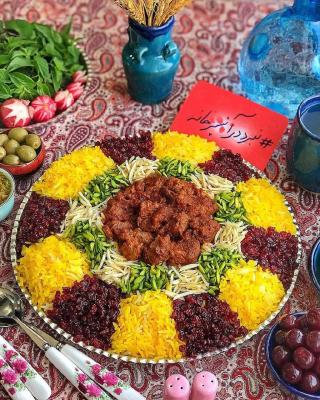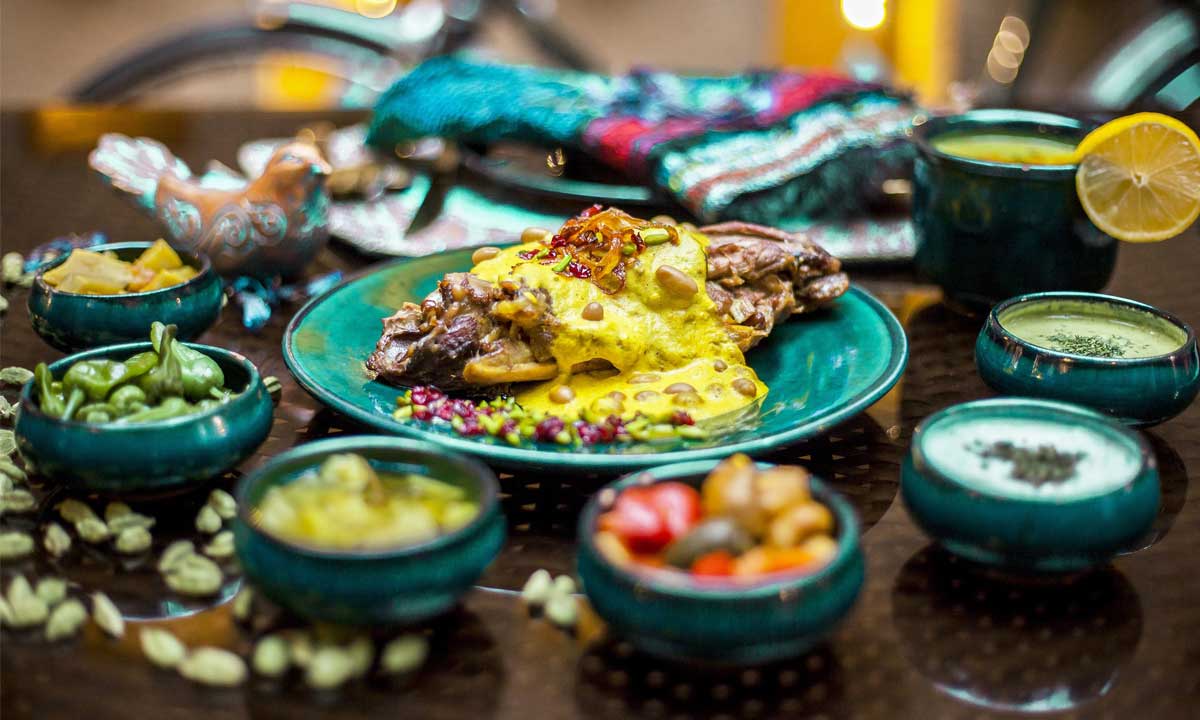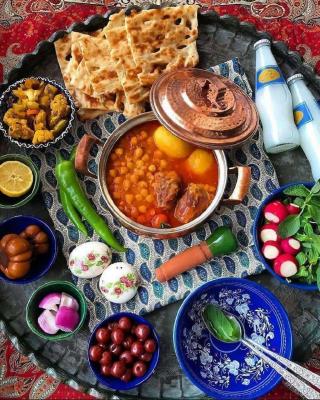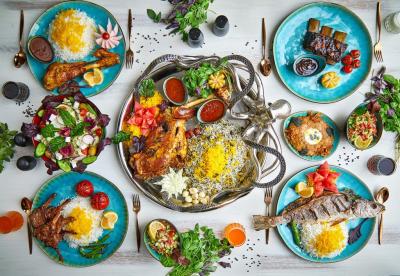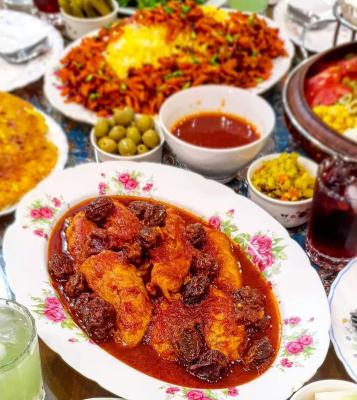Iran Cuisine (III) weirdest eating rituals in the world!
As we mentioned in our first two articles, Iran Cuisine (I) & Iran Cuisine (II), In Iran, food is believed to be a blessing from God, and disrespecting the food is equivalent to disrespecting the Creator. The dining table is revered as a place where family members spend three times a day interacting with each other. Food and Sofreh (tablecloths (in the old times people used to sit around tablecloth placed on the ground. Some still do)) are highly valued in Iranian food culture, and eating alone is a form of disrespect to family members and a sign of poor family relationships.
Mehmooni (ceremony, party) rituals in Iran
In every society, food or drink offering is a sign of love and affection and accepting that offer is a positive response to their friendship. Thus, sometimes rejecting a food offering may indicate hostility. In Iran, entertaining friends and family members with a variety of food and snacks has been an important aspect of people’s culture. Guests have always been treated with honor and respect in Persian culture. Iranian hospitality is limitless. kind eye contacts, genuine smiles, small friendly talks, and invitation for tea or dinner are parts of every Iranian behavior.
In the past, the house’s outside door was always open and everyone was welcome to come and have a meal, even strangers from other cities or countries! Guests sat around the room on Persian floor seating cushions, which in most homes today have altered into furniture and chairs, the older ones sat crossed-legged while younger ones kneeling, and the sitting place of every individual was based on their age or social status. The host sat near the door to observed and get in touch with the guests more easily. Before dinner, guests were entertained by snacks, fruit, freshly brewed tea, and “Qalyan” (hookah). Guests were not usually entertained by Sharbat (cold drinks prepared from fruits or flower petals) because it was regarded as "filling the guest's stomach with water."
In ceremonies, especially formal ones, it is politer to speak in a low voice. People usually talk to the nearest person so they don’t have to shout. Whenever one of the elders wants to say something, everyone must stay quiet and listen in order to show respect. Some minutes before lunch or dinner, maids or butlers bring bowls of water for guests to wash their hands and get ready for the meal. First, side dishes are served which includes bread slices, yogurt, vegetables, and “Torshi” (pickled vegetables) then a plate is placed in front of every guest. After that, Chelo or Polo (pilaf) decorated with saffron is placed in the middle of the table. Children are taught to wait until the oldest person in the room begins to eat then they’re allowed to eat as well.
Before spoons and forks become common in Persian culture, people usually ate meals with the help of four fingers of their right hand. They made a small “Loghmeh (morsel)” and then gently picked it up and put it in their mouth. It is impolite to take a large bite, to fill the mouth completely, or to open the mouth while chewing and talk. When they’re finished, thanking God and thanking the host and praying to increase their food and health were common. The rest of the food, utensils, and tablecloths were collected with the help of the smaller members of the host family and a number of guests. the leftovers are not thrown away but saved for animals. In the end, the guests were served with hot tea and traditional sweets.
Food tourism
In recent years, Food tourism or Culinary tourism has become more and more common among tourists. Iran, in this regard, has established a special place among foodies. The development of ecotourism resorts in the country has created the best opportunity for traditional foods to be known by foreigners and become popular among tourists. As a result, locals are now able to show their cultural values through their food and the way it is made and eaten. For this reason, we, YaldaMedTour, have created a platform to demonstrate Iran’s rich culture and attract more and more people to this beloved land.
If you enjoyed this article, stay with us and read our other articles and food recipes. Don’t forget to share and leave comments.
Iran Cuisine (III) - weirdest eating rituals in the world! Iran Cuisine (III) - weirdest eating rituals in the world!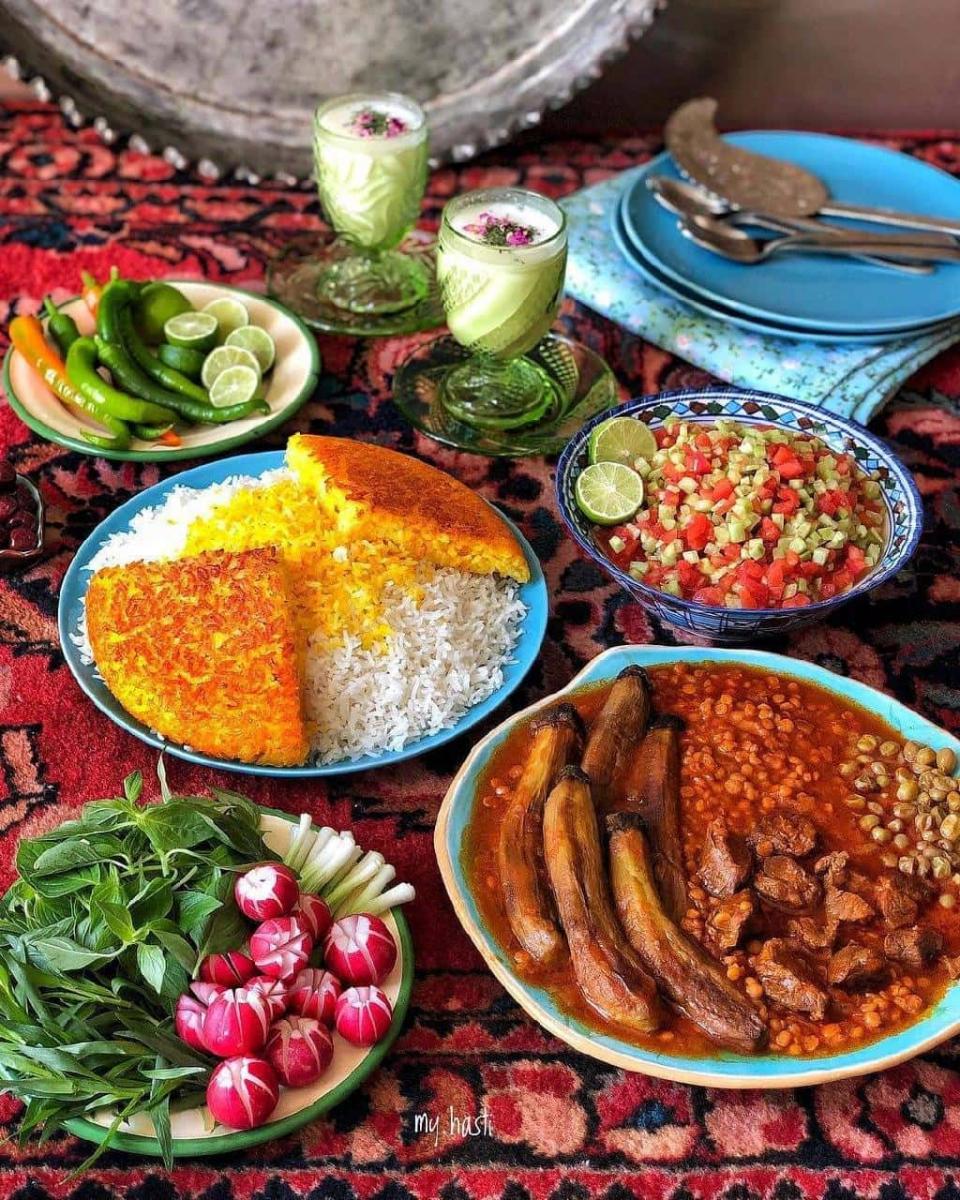 2020-09-08 19:21:37+3:30
2022-05-09 15:41:54+3:30
In every society, food or drink offering is a sign of love and affection and accepting that offer is a positive response to their friendship. Thus, sometimes rejecting a food offering may indicate hostility. In Iran, entertaining friends and family members with a variety of food and snacks has been an important aspect of people’s culture. Guests have always been treated with honor and respect in Persian culture. Their hospitality is limitless. kind eye contacts, genuine smiles, small friendly talks, and invitation for tea or dinner are parts of every Iranian behavior.
Iranian Cooking,
Iranian Cuisine,
Iranian Food,
Persian Cooking,
Persian Food,
Persian Cuisine,
eyJpdiI6IkNZOXdKSy9USm5QL3JRYXBVWGVXSFE9PSIsInZhbHVlIjoiNnNHNElyT0czZEFuMGJLSUNlSHZ5QT09IiwibWFjIjoiMWYzY2Q4ZjM1ODYyNWM3YWNmMTIyMzE4YTNhNGY3NGYwZjU2MGUzYTQxYzVmY2ExNjVjMmE1ZDYzODZkZGY4MiIsInRhZyI6IiJ9 eyJpdiI6ImNSSW5pZ0I5VHlJc3A3U09VWFRZTWc9PSIsInZhbHVlIjoiM05NMUZtV0NQenFsOHFNWFRKUTJ0QT09IiwibWFjIjoiZTllZGE4NjhiY2YzNjEzYTI1MmIyY2RkZjEyNzI5NjdiZGQ3YzEzOTY5ZDk2NDZkZWZjNzk4YzI2N2M0MzdkNyIsInRhZyI6IiJ9
Author
info@yaldamedtour.com
/en/user-profile/10233
YaldaMedTour
Barajin Salamat Road
+98
Qazvin
Qazvin, Qazvin Province, Iran.
,
info@yaldamedtour.com
2020-09-08 19:21:37+3:30
2022-05-09 15:41:54+3:30
In every society, food or drink offering is a sign of love and affection and accepting that offer is a positive response to their friendship. Thus, sometimes rejecting a food offering may indicate hostility. In Iran, entertaining friends and family members with a variety of food and snacks has been an important aspect of people’s culture. Guests have always been treated with honor and respect in Persian culture. Their hospitality is limitless. kind eye contacts, genuine smiles, small friendly talks, and invitation for tea or dinner are parts of every Iranian behavior.
Iranian Cooking,
Iranian Cuisine,
Iranian Food,
Persian Cooking,
Persian Food,
Persian Cuisine,
eyJpdiI6IkNZOXdKSy9USm5QL3JRYXBVWGVXSFE9PSIsInZhbHVlIjoiNnNHNElyT0czZEFuMGJLSUNlSHZ5QT09IiwibWFjIjoiMWYzY2Q4ZjM1ODYyNWM3YWNmMTIyMzE4YTNhNGY3NGYwZjU2MGUzYTQxYzVmY2ExNjVjMmE1ZDYzODZkZGY4MiIsInRhZyI6IiJ9 eyJpdiI6ImNSSW5pZ0I5VHlJc3A3U09VWFRZTWc9PSIsInZhbHVlIjoiM05NMUZtV0NQenFsOHFNWFRKUTJ0QT09IiwibWFjIjoiZTllZGE4NjhiY2YzNjEzYTI1MmIyY2RkZjEyNzI5NjdiZGQ3YzEzOTY5ZDk2NDZkZWZjNzk4YzI2N2M0MzdkNyIsInRhZyI6IiJ9
Author
info@yaldamedtour.com
/en/user-profile/10233
YaldaMedTour
Barajin Salamat Road
+98
Qazvin
Qazvin, Qazvin Province, Iran.
,
info@yaldamedtour.com
Keywords: Iranian Cooking, Iranian Cuisine, Iranian Food, Persian Cooking, Persian Food, Persian Cuisine,
Copyright © 2025 To YaldaMedTour. All Rights Reserved.
![]()

